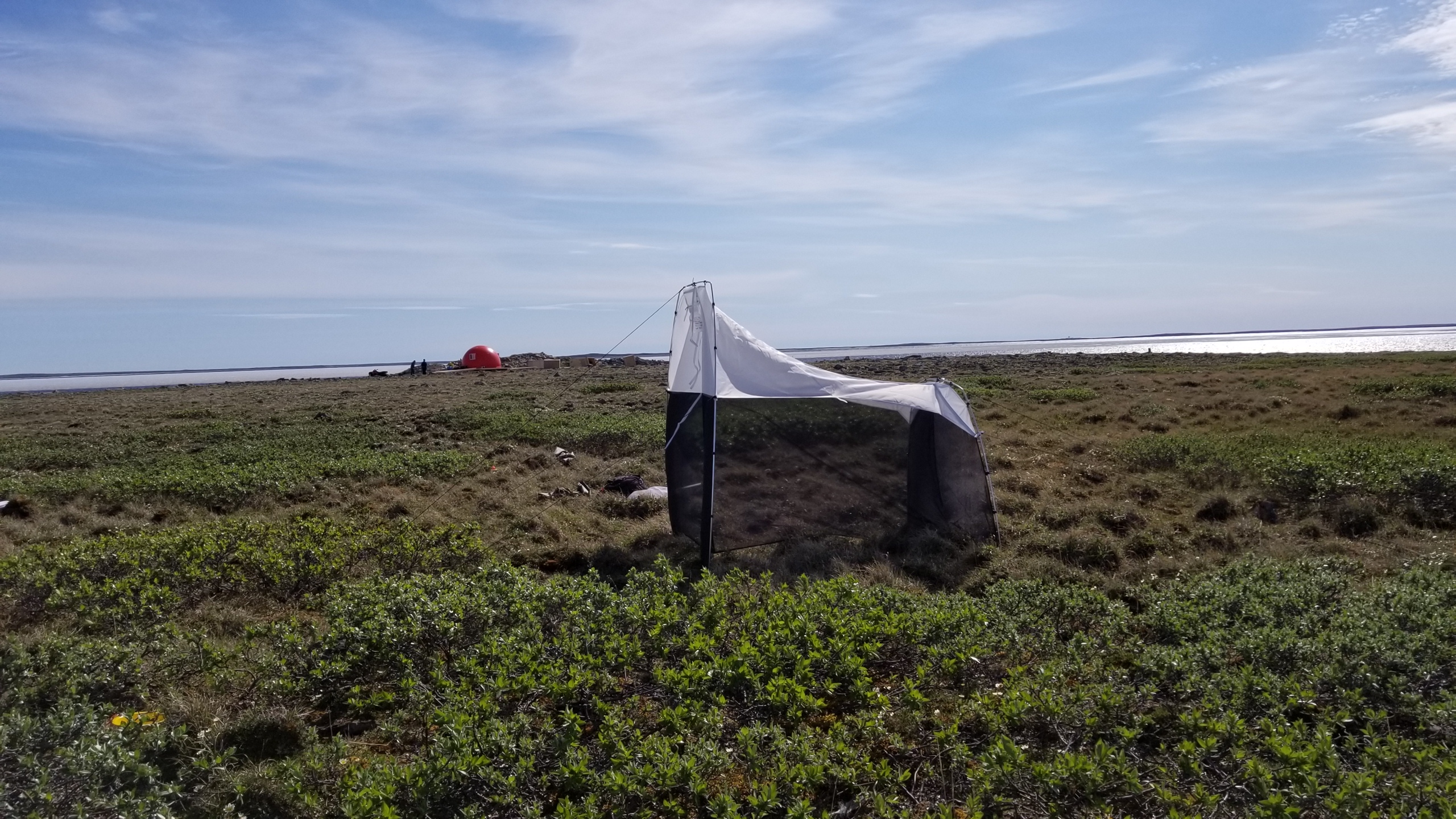This past summer the Centre for Biodiversity Genomics partnered with Polar Knowledge Canada to work in Cambridge Bay, Nunavut where the Canadian High Arctic Research Station (CHARS) is based. Staff conducted a biodiversity survey of the local area collecting arthropods, plants, lichens and mosses. Pictured here is one of the collecting sites in the Intensive Monitoring Area on the North shore of Granier Lake. The Malaise trap (invented by René Malaise in 1934) is an ideal passive trapping method for flying insects. Samples collected will be identified using DNA barcoding, a species identification method that uses a short standardized gene region.
